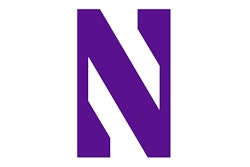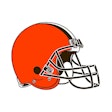Minor-league baseball stadiums in urban settings
Rick Cerone grew up playing stickball in the streets of Newark, N.J. As a boy, he listened to his father recount childhood trips to Ruppert Stadium, where the Newark Bears played professional baseball during the first half of the 20th century. The Bears, then a Class AAA affiliate of the New York Yankees, left town in 1949, five years before the younger Cerone was born. In time, Rick would move on, too, becoming a respected catcher during an 18-year major-league career that included an All- Star season with the Yankees in 1980.
Today, Cerone is back in Newark - and so are the Bears, thanks largely to Cerone's efforts to return professional baseball to the heart of his hometown.
"This is personal," says Cerone, president and sole owner of the resurrected franchise, which last summer completed its first full season in $30 million Riverfront Stadium. "I loved growing up in Newark. My father told me many stories about the old Newark Bears, so I did this for him and the great city of Newark." "Can we get any cornier than that?" asks Frank Boulton, founder and chairman of the three-year-old Atlantic League of Professional Baseball Clubs, in which the Bears compete with eight other teams. "Probably not, but Rick was the right guy to spearhead that project, to bring the Newark Bears to downtown Newark after 50 years of hibernation." Corny, perhaps, but a reminder that baseball can still be, as documentarian Ken Burns put it, about "coming home."
And home for a growing number of minor-league teams has taken the form of new multimillion-dollar ballparks carefully positioned within their communities' urban landscape. Loaded with modern amenities and nostalgic charm, these stadium projects have become brass rings for both club owners seeking exposure and profitability, and politicians looking to reenergize depressed neighborhoods and boost civic pride.
Nowhere is this faith in baseball more evident than in the cities that make up the independent Atlantic League, where five new stadiums have opened since 1998 and more than $70 million in public funding has been poured into ballpark design and development league- Ducks' inaugural season drew 436,000 fans to $22 million EAB Park in Central Islip, N.Y., and in what local officials concede was one of Suffolk County's worst neighborhoods. This only marks the beginning of the area's resurgence, according to Boulton. "We built a new ballpark, and everybody said, 'Why didn't you get the land around it and put up a hotel and restaurants?' All that development is going to follow," he says. "I'm in the ballpark business. Other people are going to make money, taking advantage of our immense success."
In Camden, N.J., meanwhile, a single developer has been entrusted with the transformation of a full 150 acres of waterfront land - from a bleak cityscape littered with abandoned factories and railroad tracks into a gleaming mecca of interstate tourism. "Camden's a very poor city, and my organization is in charge of coordinating the waterfront redevelopment," says Tom Corcoran, president of Camden-based Cooper's Ferry Development, a private non-profit organization incorporated by the real estate's three original owners - the city of Camden, Campbell's Soup Company and RCA. "Our job is to coordinate with the public and private sectors to come up with a master plan." So far, the site, now publicly owned by the Delaware River Port Authority and the Camden Redevelwide. "We are usually a component of an elected official's strategy toward rehabilitation or revitalization of a downtown or urban setting," says Boulton, who serves as principal owner of the league's Atlantic City Surf and Long Island Ducks. "It's kind of fun to be a part of those projects because there are always challenges. There's always a lot of debate about whether or not this is going to work."
Minor-league baseball appears to be working on Long Island, where the opment Agency, includes a state-funded $52 million aquarium, a large amphitheater built with major funding from Sony, and a publicly funded children's garden. The Navy recently donated the highly decorated battleship New Jersey to the project, and private donations are being sought for its restoration. Eventually, a retail and entertainment complex will bring shops, restaurants and nightclubs to the site, and a 500,000-square-foot former RCA building - abandoned for eight years - will be converted into high-end rental units.
The site's next scheduled opening, however, is a $20 million ballpark near the waterfront campus of Rutgers University, some 500 yards north of the site's other completed attractions. Beginning this season, it will serve as home to both the Rutgers baseball team and the Atlantic League's expansion Camden Riversharks. The park has been carefully positioned to take advantage of two dramatic backdrops beyond its outfield walls: the Philadelphia skyline due west across the Delaware River and the illuminated Ben Franklin Bridge connecting Philly and Camden to the northwest. According to Corcoran, only a ballpark could take full advantage of this 10-acre parcel adjacent to the bridge. "You don't care about the vibration or the noise," he says. "That will all get lost in the stadium."
Bridge access to Camden notwithstanding, the regional port authority plans to build a $26 million aerial tram that will shuttle 2,500 people per hour to and from Philadelphia in eight-person gondolas, and a light-rail system is slated for completion by 2003. Both will make stops within 200 yards of the stadium. "The traditional rule of thumb in the business seems to be people will drive 30 minutes or 30 miles, whichever is quicker, to a minor-league baseball stadium," Corcoran says, adding that the Riversharks can draw from some six million people who fit that proximity profile. Of course, so can the Philadelphia Phillies, but the closeness of majorleague baseball won't cripple Camden attendance, according to Corcoran. "In fact, it's an advantage," he says. "We share all the demographics of the Phillies' market, but we differentiate ourselves by being more affordable. The whole concept is that a family of four should be able to go to the game, park, have four hot dogs, four soft drinks and four good tickets, and get out for $35 or $40. We have the best of all worlds."
Because of its urban setting, the Camden ballpark could easily tap sewer and water lines already on site. But because the park was part of a vast redevelopment project, other minor infrastructure improvements, such as perimeter roads and sidewalks, needed to be added. Not so in Newark, where existing streets and highways in the downtown area greatly influenced the design of Riverfront Stadium, according to Dave Popkin, the Bears' assistant general manager for communications. As proof he points to the park's left-field fence, located a mere 302 feet from home plate at the foul line before it retreats to 394 in dead center, a quirk dictated by the parallel course of nearby McCarter Highway. "It's kind of a drastic angle, and it gives the park some character," Popkin says.
Though not the first choice of team officials (the urban site on which Ruppert Stadium once stood was found to have contaminated soil), the downtown location has been viewed in hindsight as a blessing. Popkin says the park represents the "second piece of a bigger puzzle" in the city's urban renaissance, and is located just three blocks from the first piece - the New Jersey Performing Arts Center, built in 1997. Another piece fell into place last year, when state and federal officials agreed to fund a light-rail system that by 2004 will run from Newark Airport to Newark-Penn Station to the NJPAC to Riverfront Stadium. "That's something that Newark has been missing," Popkin says.
It won't come too soon for the Bears, whose per-game attendance dipped by 400 fans in 2000 compared to the previous year, when only a partial schedule was played at the new stadium. An attendance goal of 4,000 per game has been set for the upcoming season, but one wonders whether the 6,000-seat facility will ever be filled on a regular basis. Despite the urban renaissance, which has led to skyrocketing real estate values throughout downtown, Newark and the Bears have not quite crawled out of the shadow of the city's checkered past. "After the race riots in 1967, Newark was pretty much no-man's land, and we have been trying to recover ever since," Popkin admits. "Lately, there's a lot more to be proud about. Newark will be a destination point again."
While the Newark Bears appear determined to turn the corner, a proposal to bring a Northern League team and a new stadium to Springfield, Mass., has been halted dead in its tracks. Springfield Mayor Mike Albano has championed a downtown minor-league ballpark for the city since 1993, when he sat on the city council. He even selected what he thought was the ideal site - one surrounded by highway access and plenty of on-street and city-owned parking. A new stadium there would help complete a chain of downtown destinations that currently includes a civic center (home of the American Hockey League's Springfield Falcons) and a symphony hall, with several fine restaurants in between. A new Basketball Hall of Fame is being built only a few blocks from the proposed ballpark site.
However, already situated on the site is a strip mall whose owner refused to acquiesce to the proposed stadium project. The resulting power struggle ultimately reached Superior Court, demonstrating that elected officials seeking a minor-league stadium for their cities don't always win - even when they play hardball.
City officials and members of a nonprofit group, Springfield Baseball Corp., sought lawful seizure of the property through eminent domain, which would have required store owners to relocate while the city made site improvements it deemed were in the public interest. City Councilor Bill Foley and others cried foul, however, and organized a petition against the seizure. A judge then ruled last February that Springfield Baseball Corp. did not represent public ownership of the stadium, and thus refused to give the seizure the go-ahead.
According to Foley, who voted against a city council majority that had previously authorized the seizure, Northgate Plaza didn't meet eminent domain criteria - namely, it didn't exhibit blighted conditions. Instead, he contends, it remains a well-patronized shopping center that pays roughly $100,000 annually in local taxes. A ballpark, meanwhile, provided no guaranteed return on the city's investment, save the entertainment value it would potentially create (see "Touching All the Bases," opposite). "And the residents of Springfield overwhelmingly took that side of the issue," Foley says.
Other politics were at play, according to Albano, who claims his staunchest opponents on hot-button issues such as trigger locks and affirmative action were quick to turn against his proposal to build a ballpark on the Northgate site. Foley, meanwhile, insists he is not against baseball in Springfield. In fact, he easily rattles off player names from old Springfield Giants rosters, though that Class AAA club disappeared in the mid-1960s.
He even offered to chair the mayor's siteselection committee, formed last spring in the wake of the court ruling with the goal of identifying three or four alternatives to the Northgate location. Albano accepted Foley's offer, but it's clear where the mayor's heart remains. "If you saw it, and you're a baseball fan, you'd fall in love with it," he says of the nowforbidden original site. "The highway goes right around it. People coming into the city would see the ballpark. It would have been part of our downtown."
Mike Graney, head of both the Springfield Baseball Corp. and the Springfield Business Development Corp., sounds a little less wistful when asked about the site-selection setback. "It's long, involved and complicated, and I don't really want to get into the details because they still aggravate me," Graney says. "But the long and short of it is the stadium opponents here and the landowners whose land was being taken fought this thing in court and won, so we don't have a project right now."
If baseball is ever to return to Springfield, it likely won't be for several years, and it almost certainly won't be on the site of Northgate Plaza. "People believed it was a good site; other people believed it wasn't. It wasn't necessarily that people were right or wrong," Foley says. "Who knows? If it were being built today, if it were there as a stadium, maybe it would work. You can't fault a guy for trying."
Minor-league baseball as a catalyst of urban renewal presents a doubleedged sword. It may attract reinvestment and patronage in city neighborhoods long left for dead, but fans are likely to frequent an urban ballpark only if any perceived stigma on the neighborhood is effectively erased. "I remember some pretty high-ranking elected officials telling me, 'Gee, I don't know if my constituents are actually going to come to this ballpark in this particular area,' " Boulton says. "But if you do your due diligence, you do your fact-finding and you place the urban ballpark properly, you get an awful lot of exposure." But, Boulton cautions, "in minor-league baseball, Mom, Dad, Billy and Suzy have to feel safe. They won't go if they don't feel safe."
Families will attend if they can get to and from the park safely and easily, spend about the same amount of money as they would at the multiplex and still feel like they've been part of a city event. Boulton refers to the Newark model. "Newark's park is a piece of a bigger puzzle," he says. "While the ballpark's in the $30 million range, the city's performing arts center cost a couple hundred million. The performing arts center was there first; the ballpark came second. But people love the game of baseball, and they come out for it.
"And where a state-of-the-art facility has been built in these cities, the fans and the people who live there really appreciate it. They can experience affordable family entertainment - one of the mantras of minor-league baseball."

































